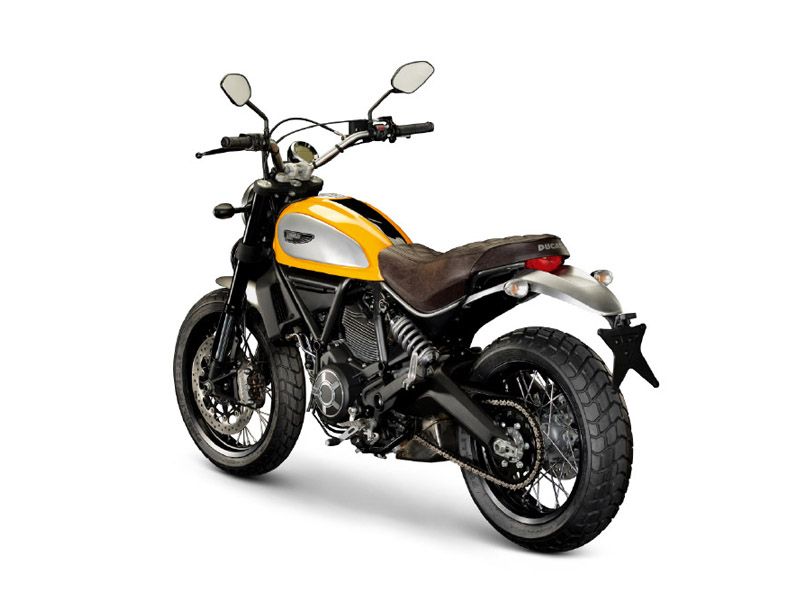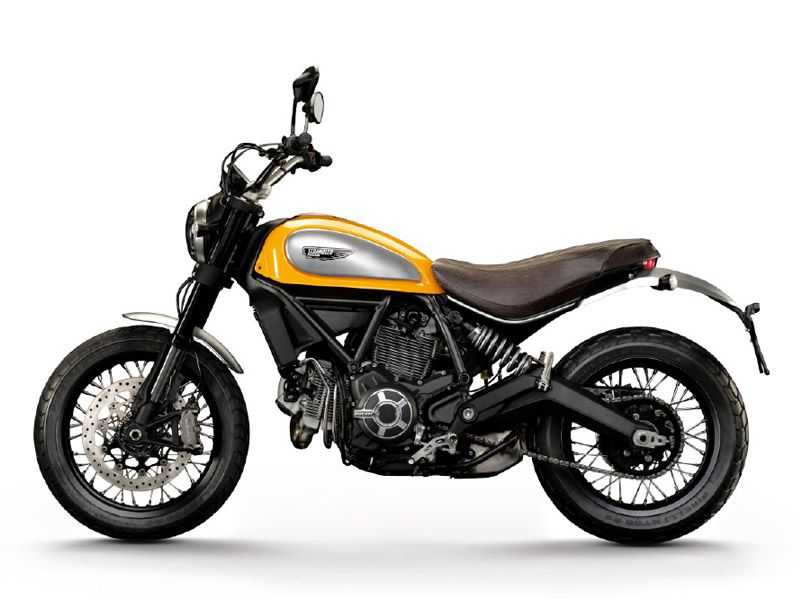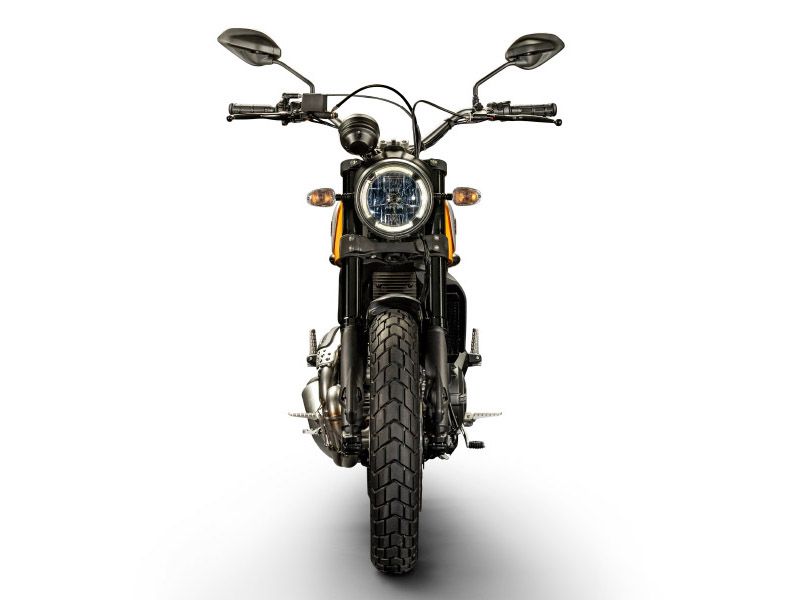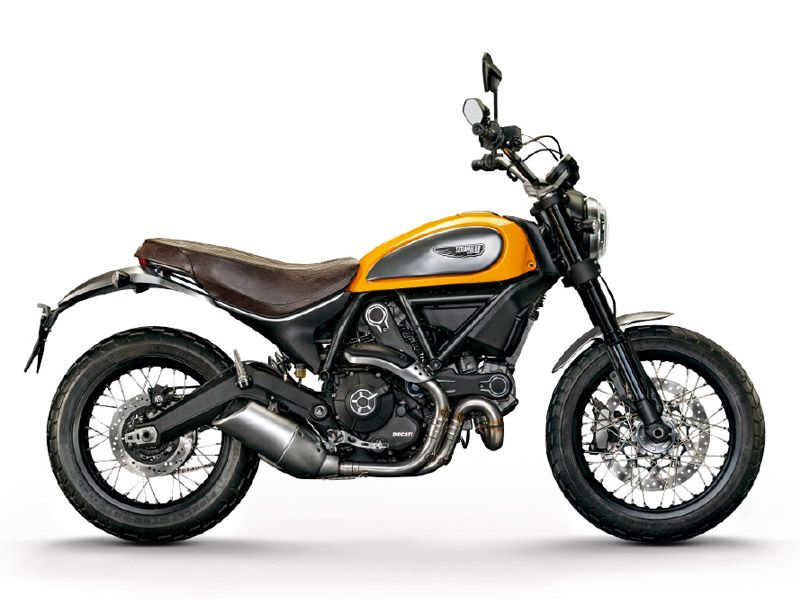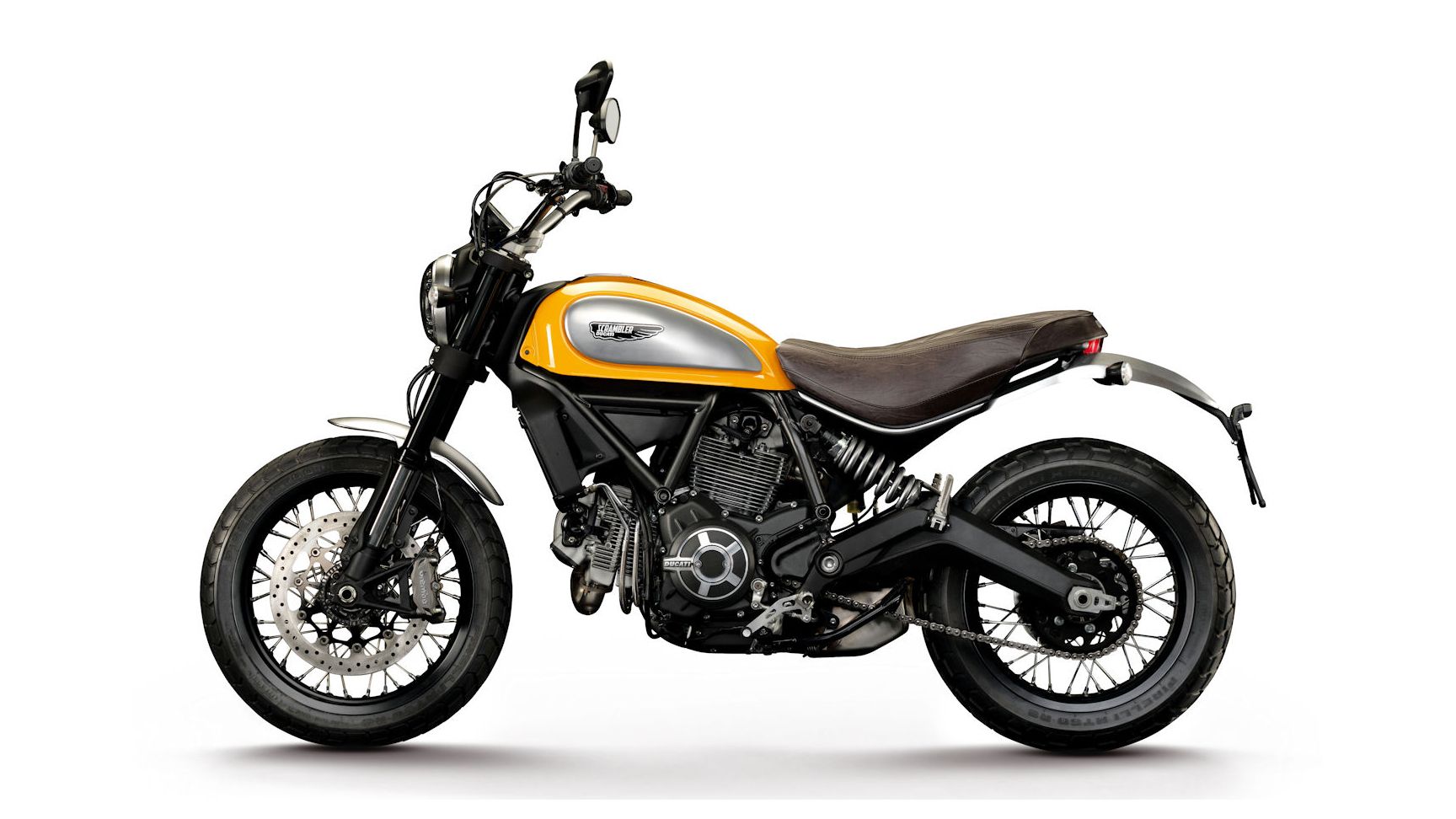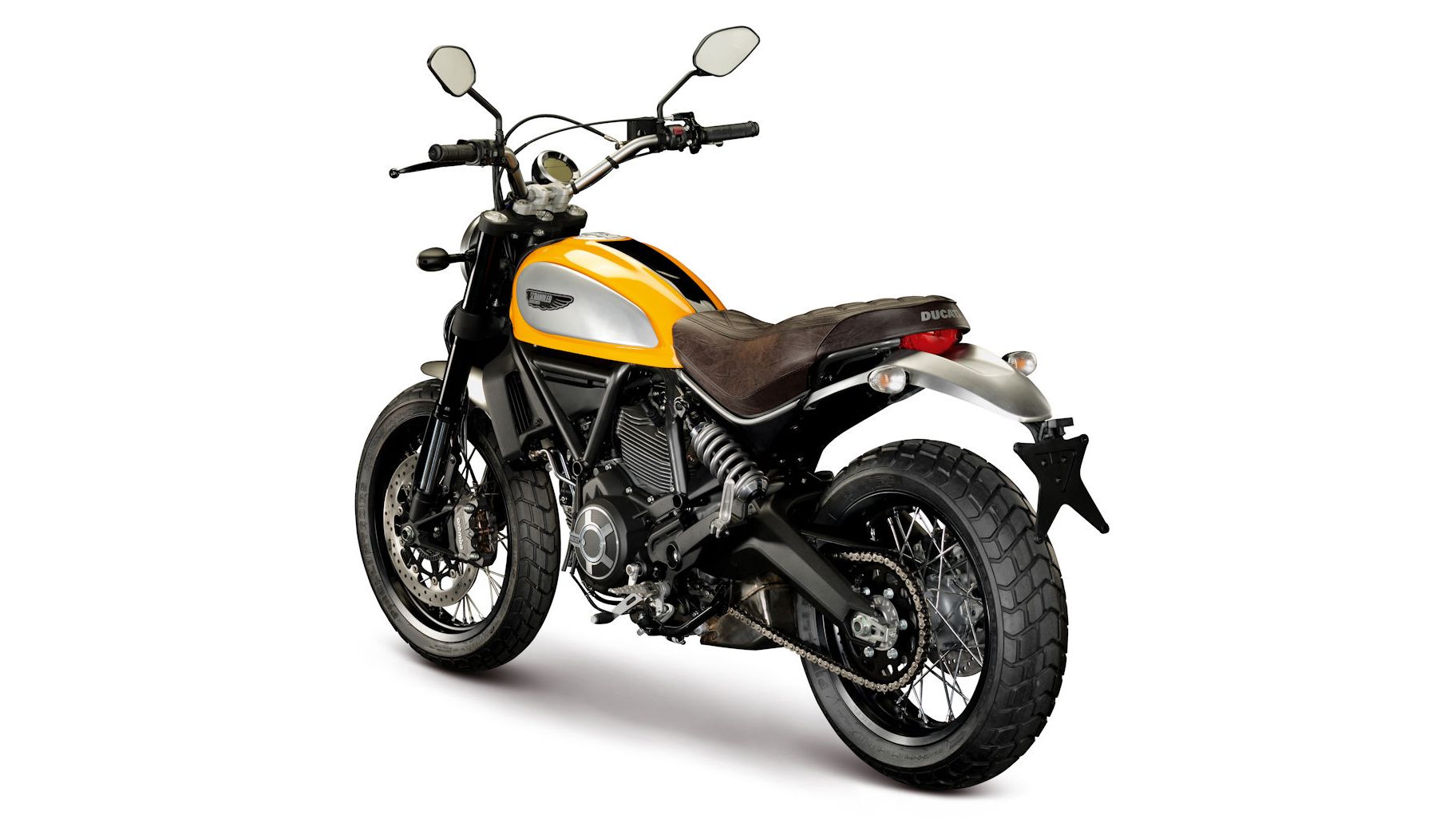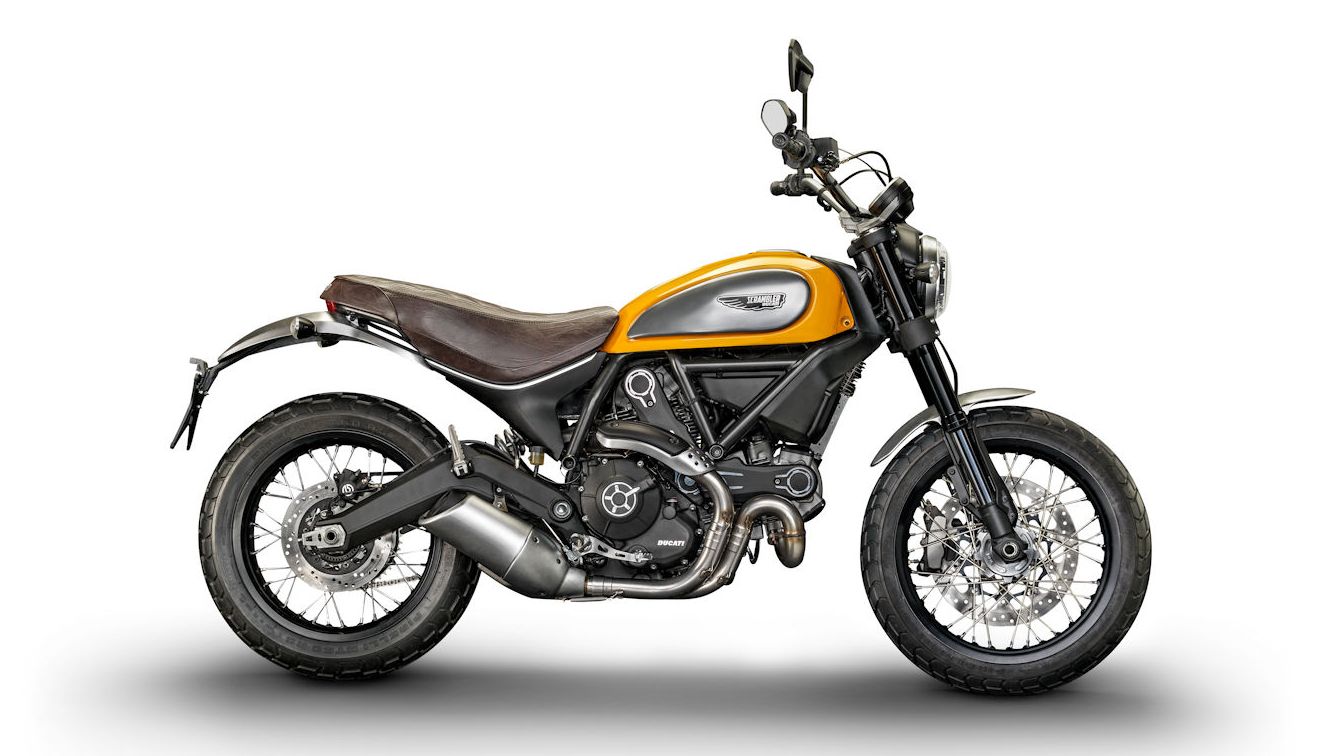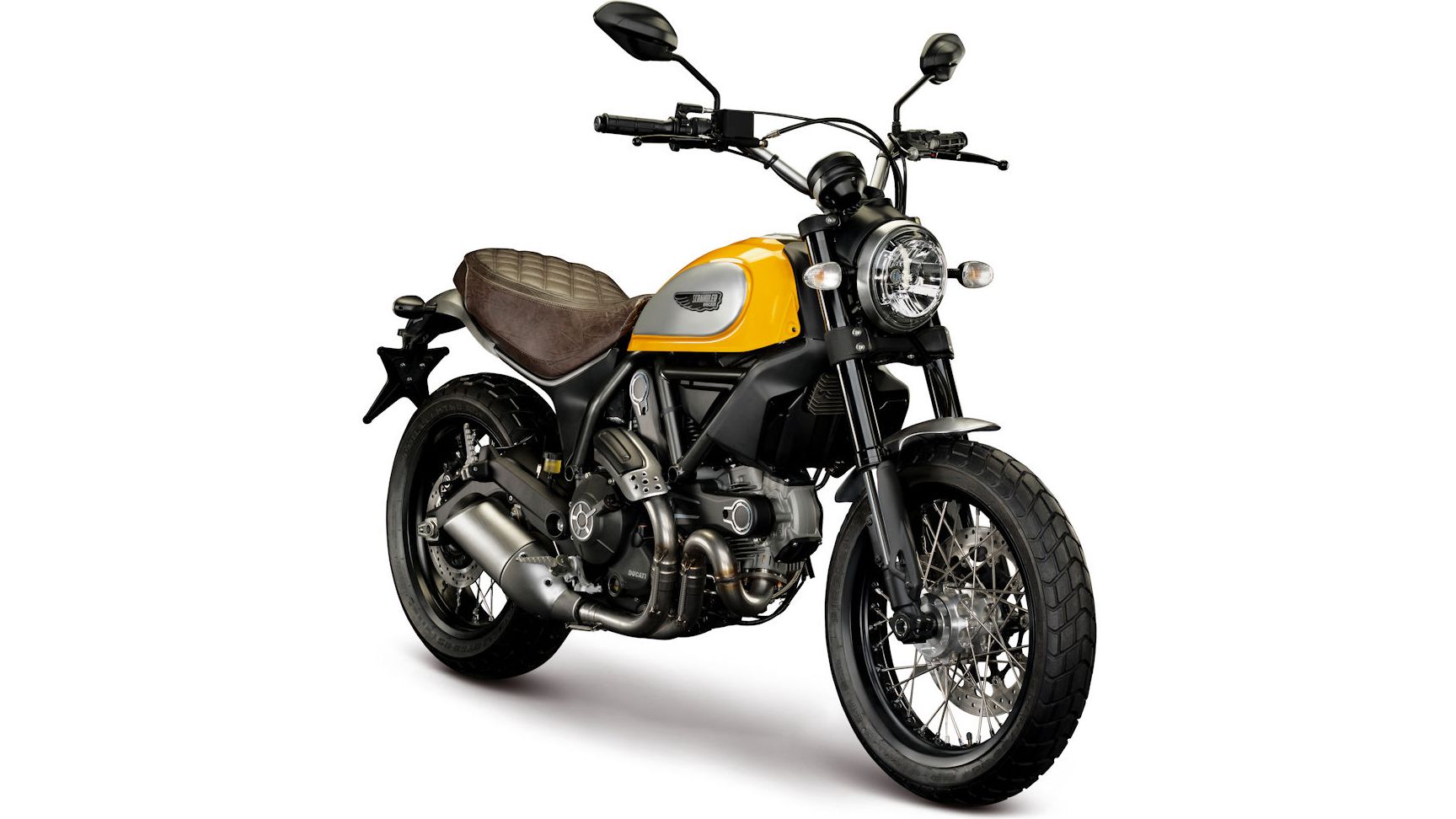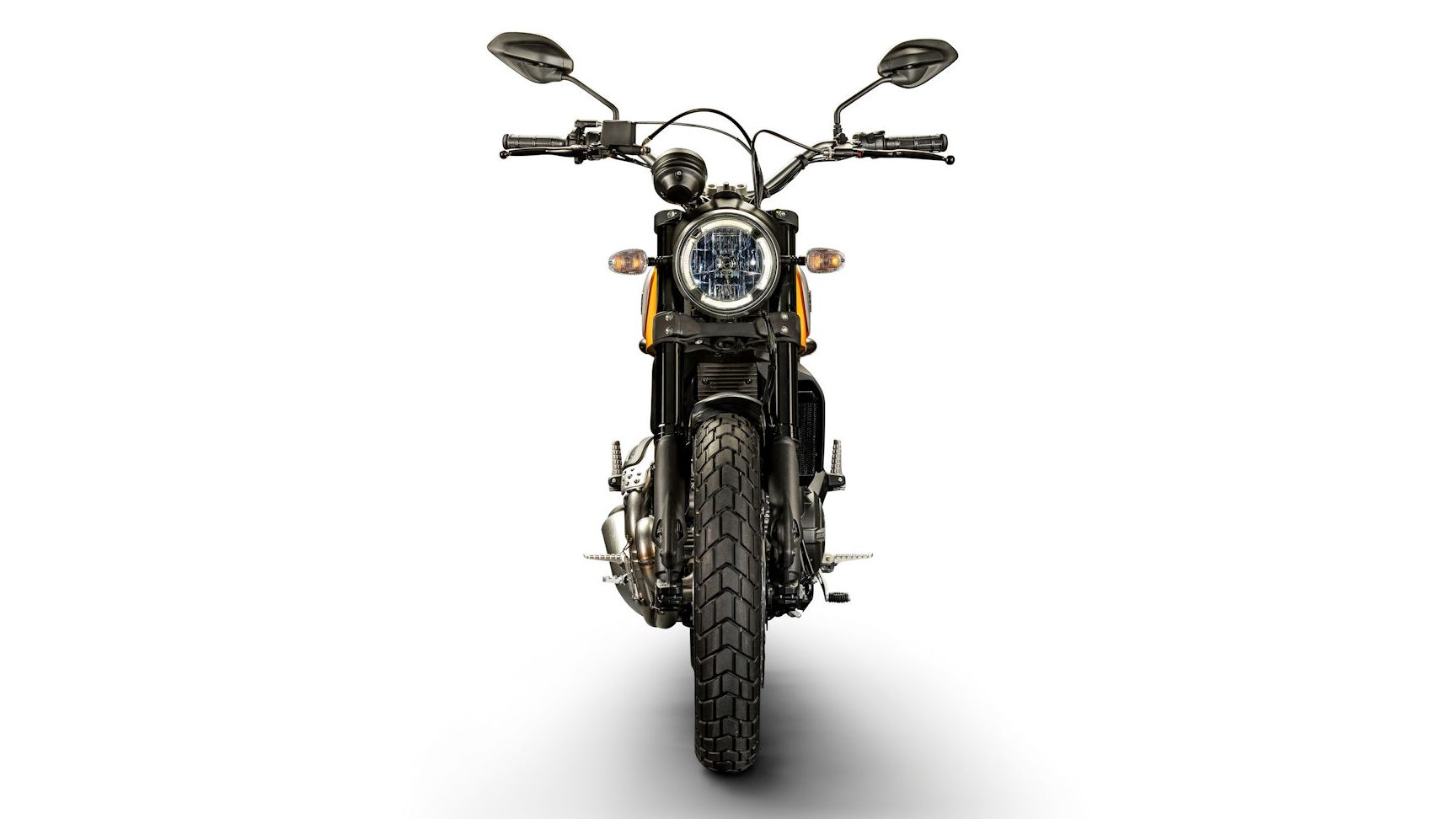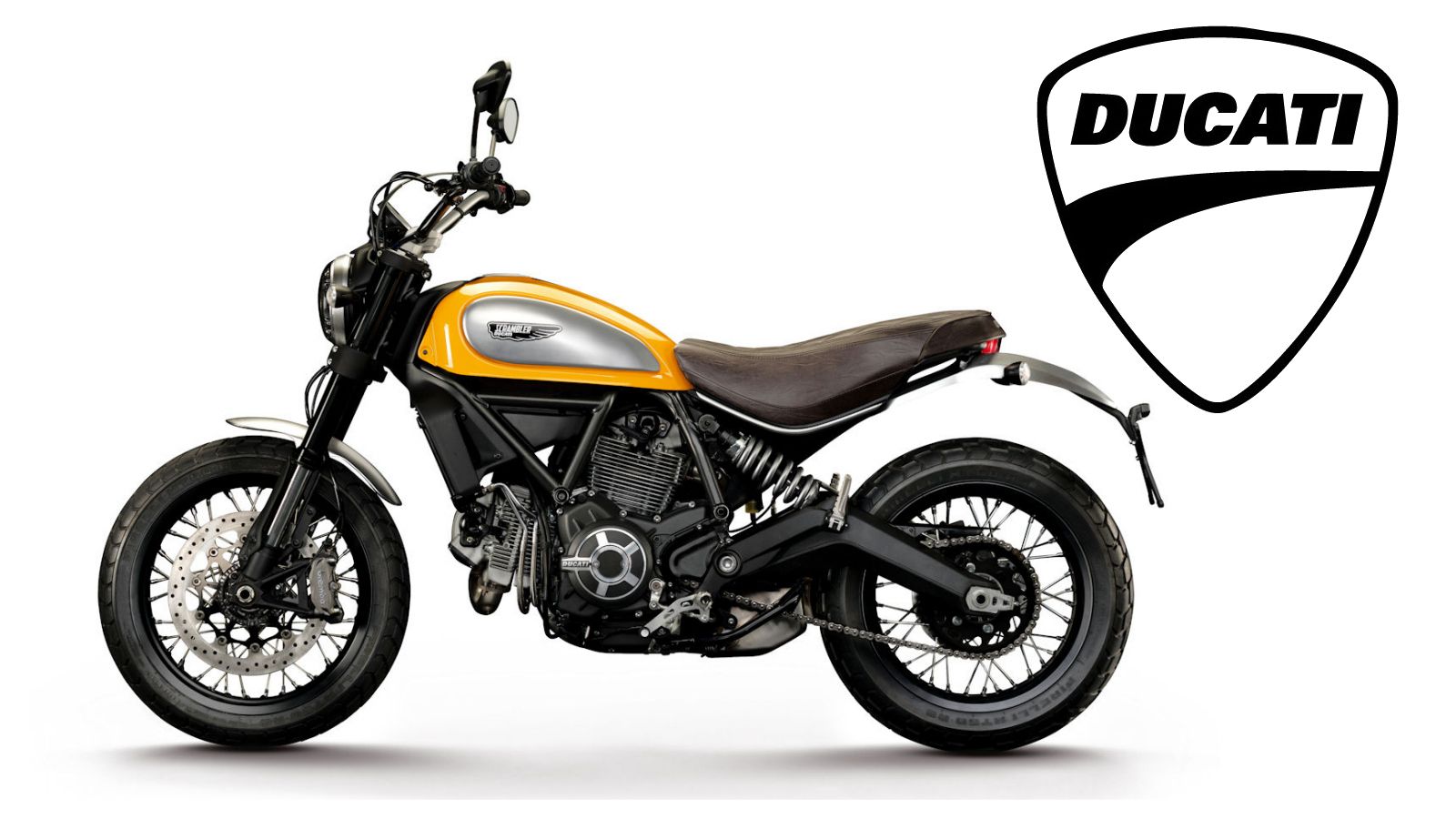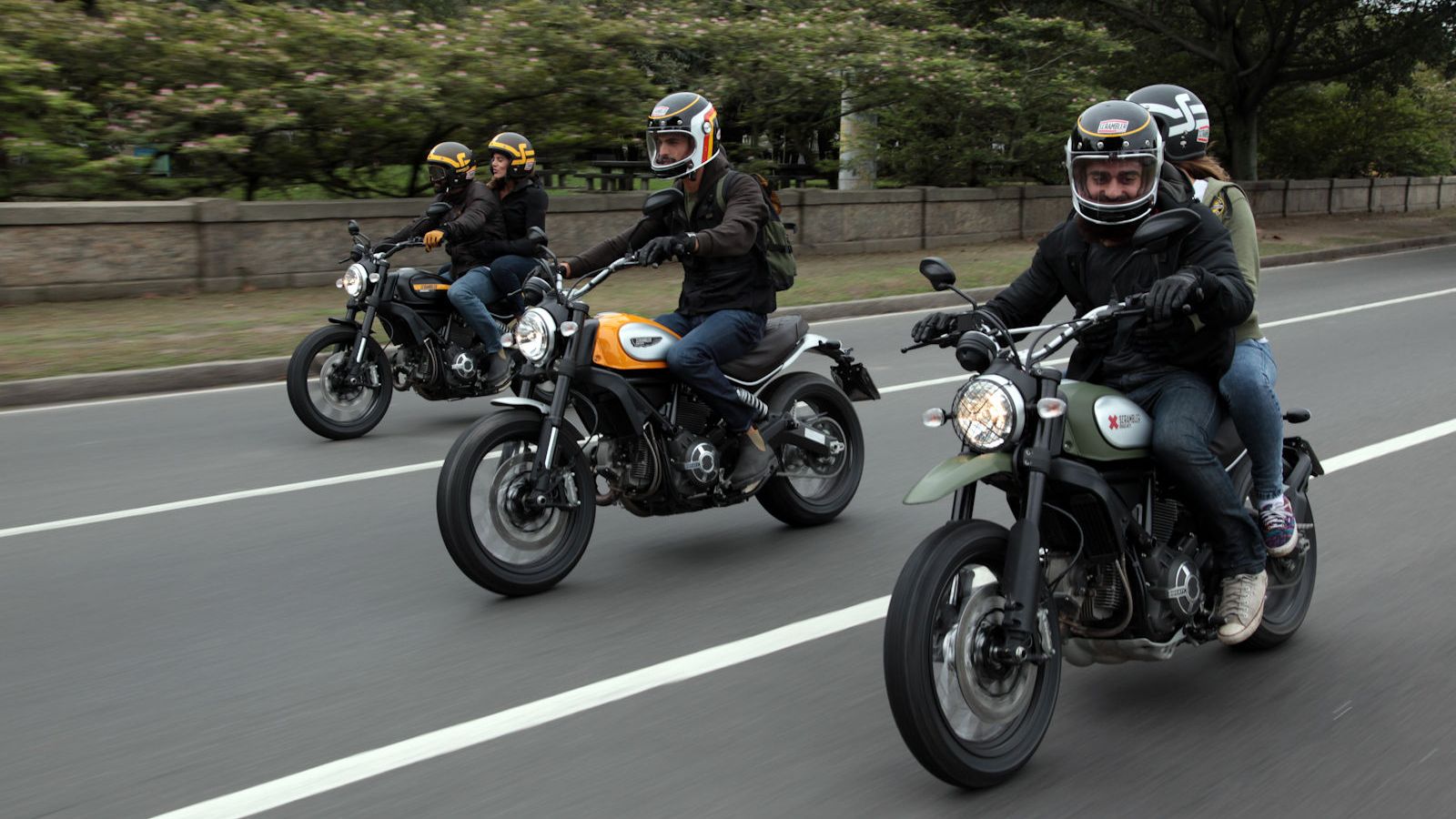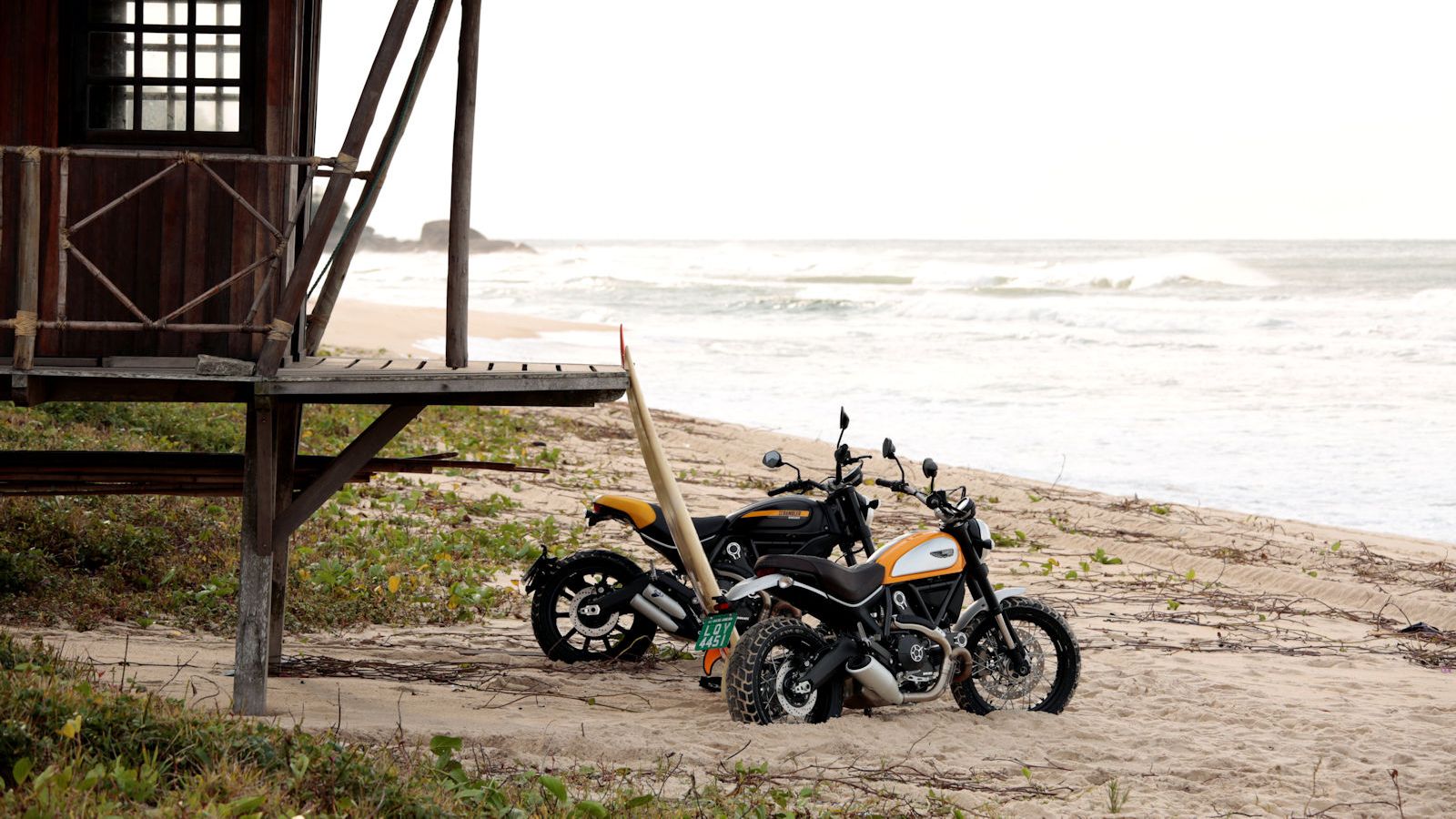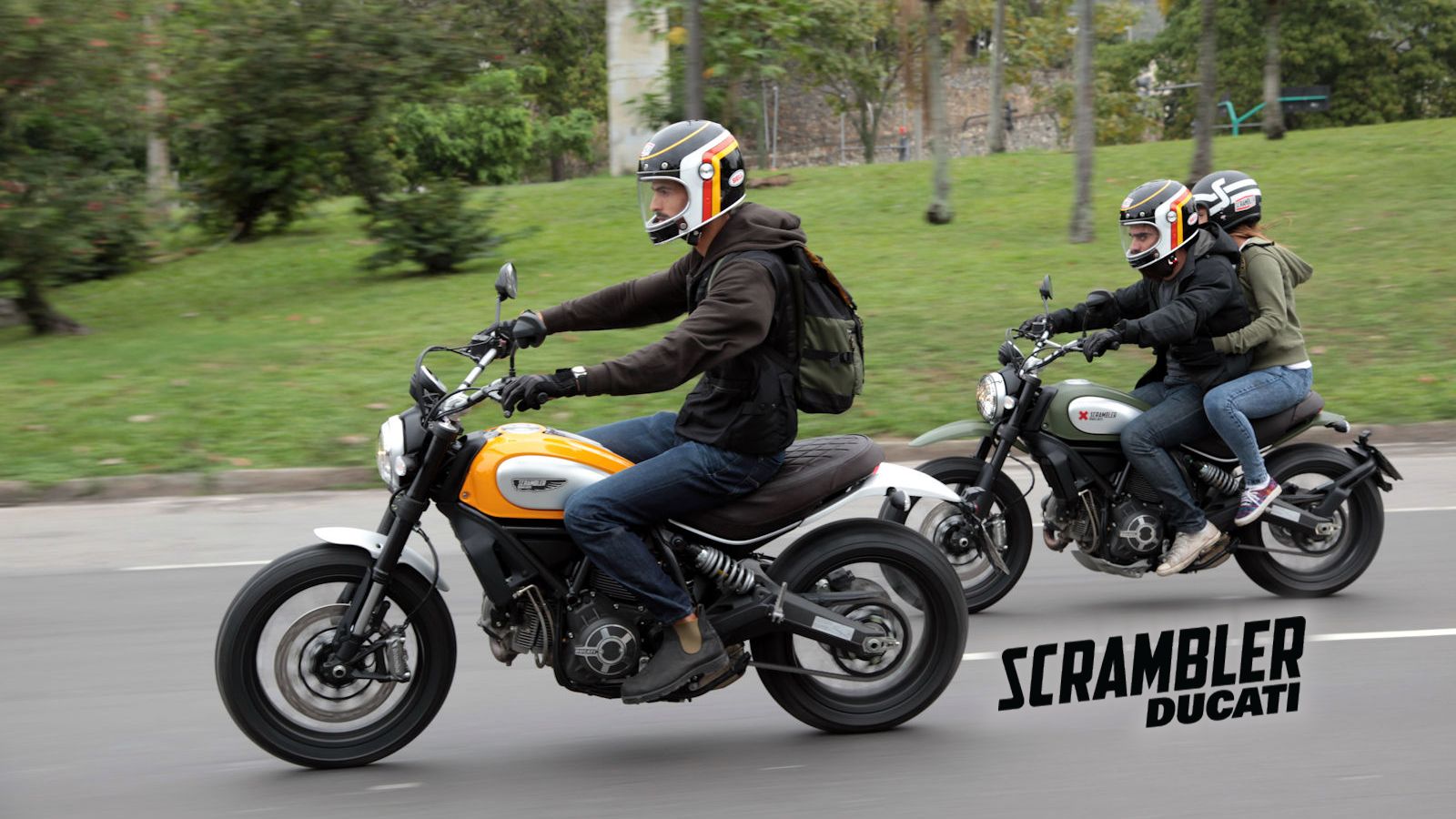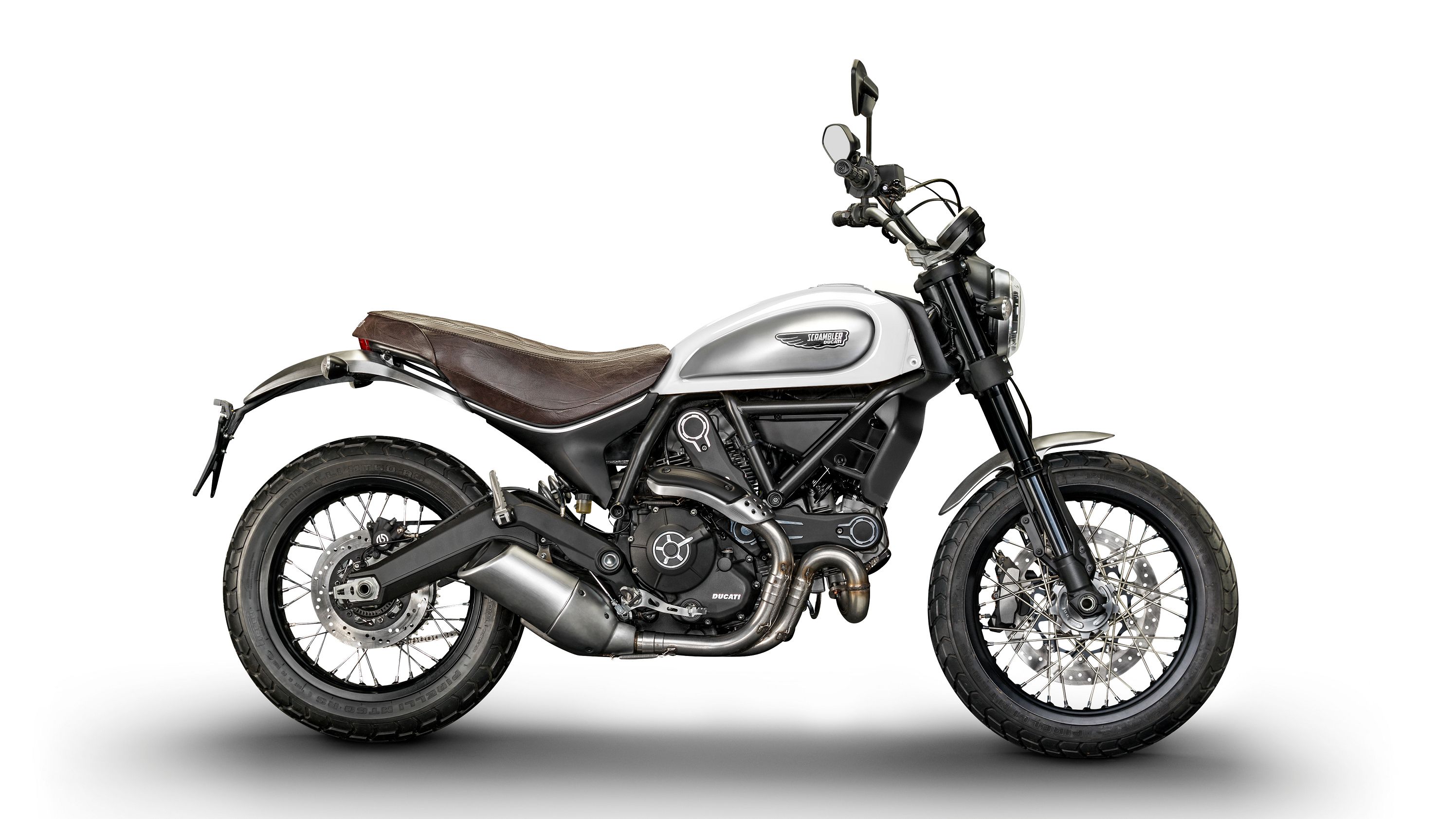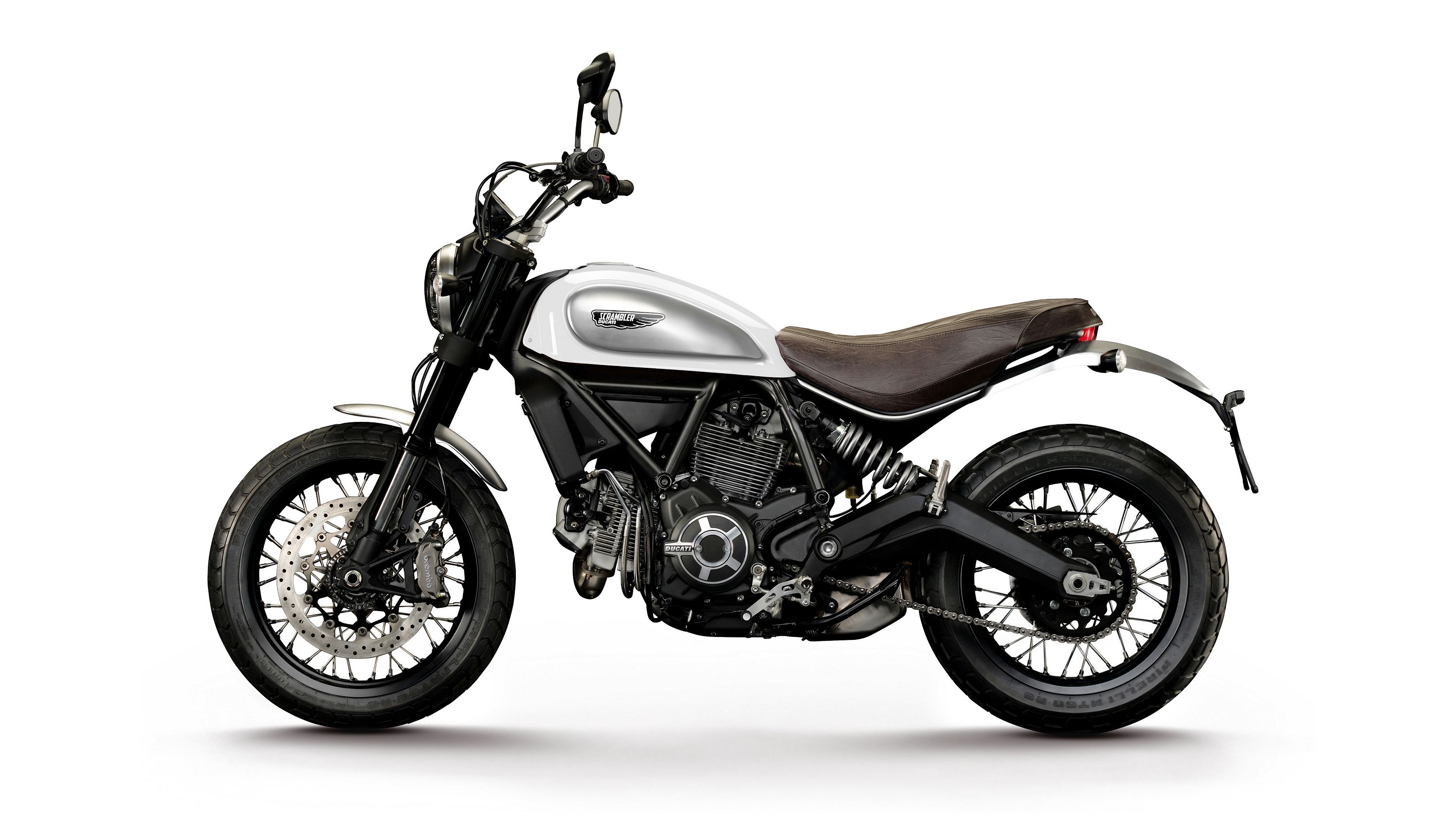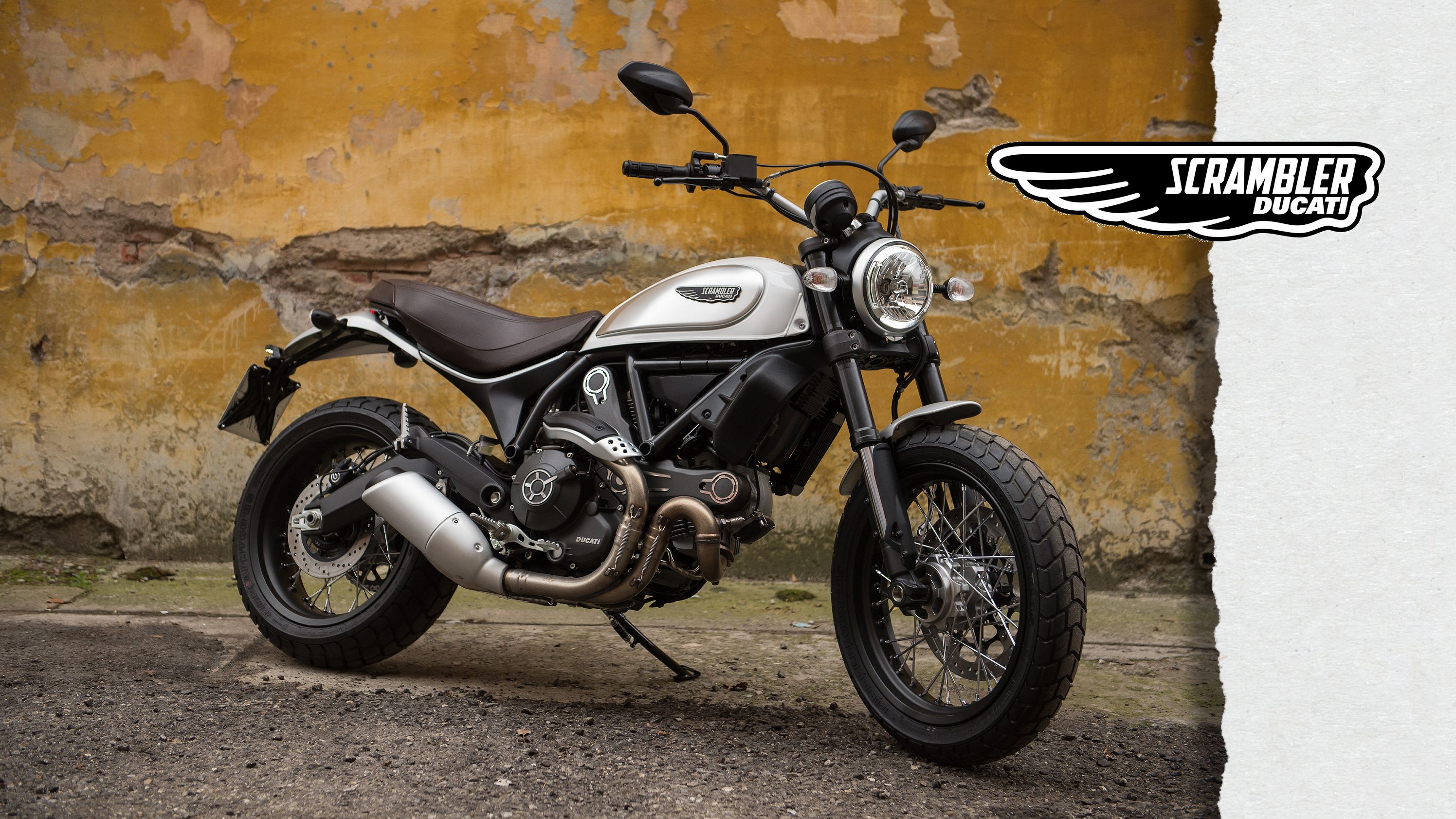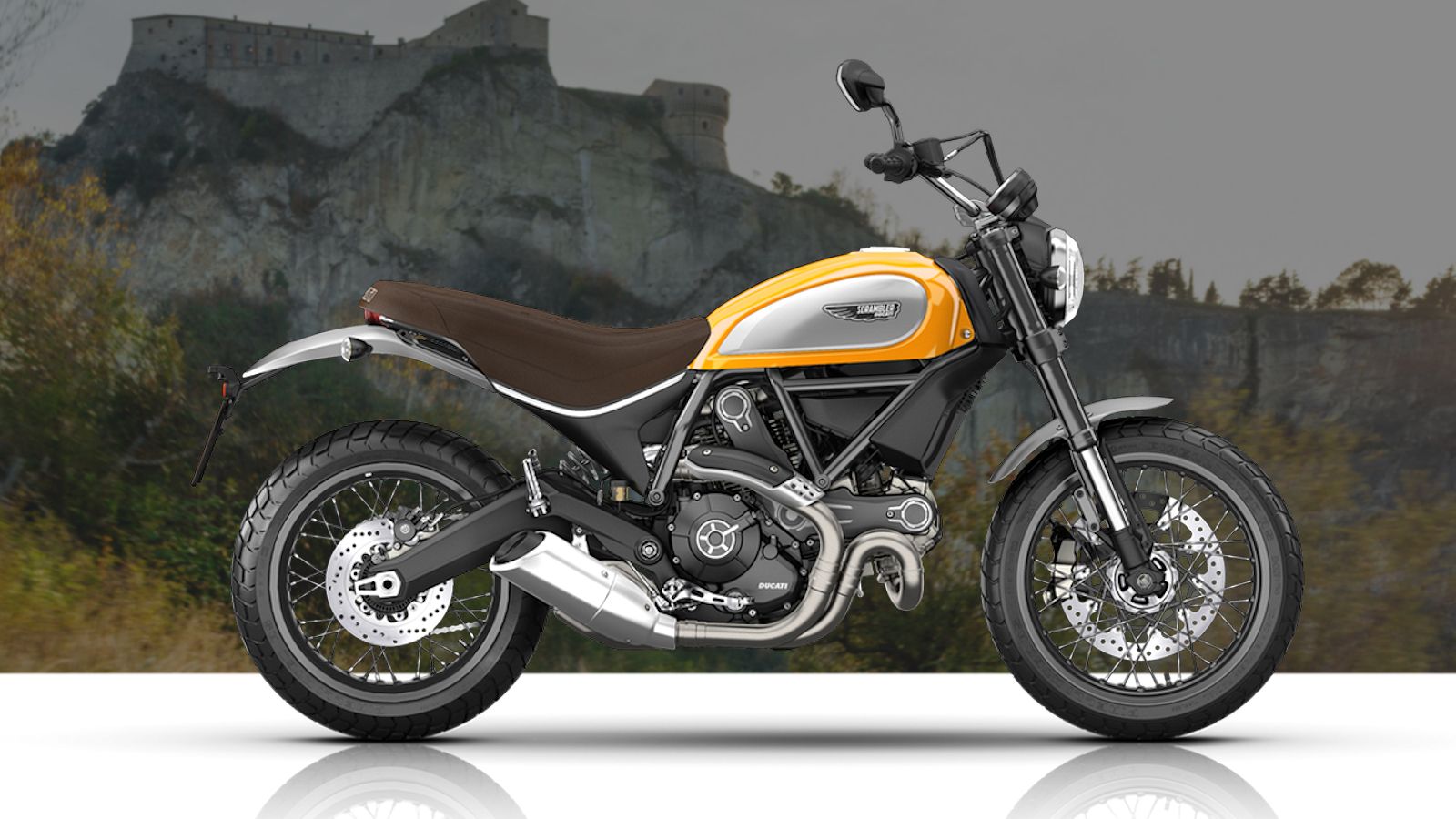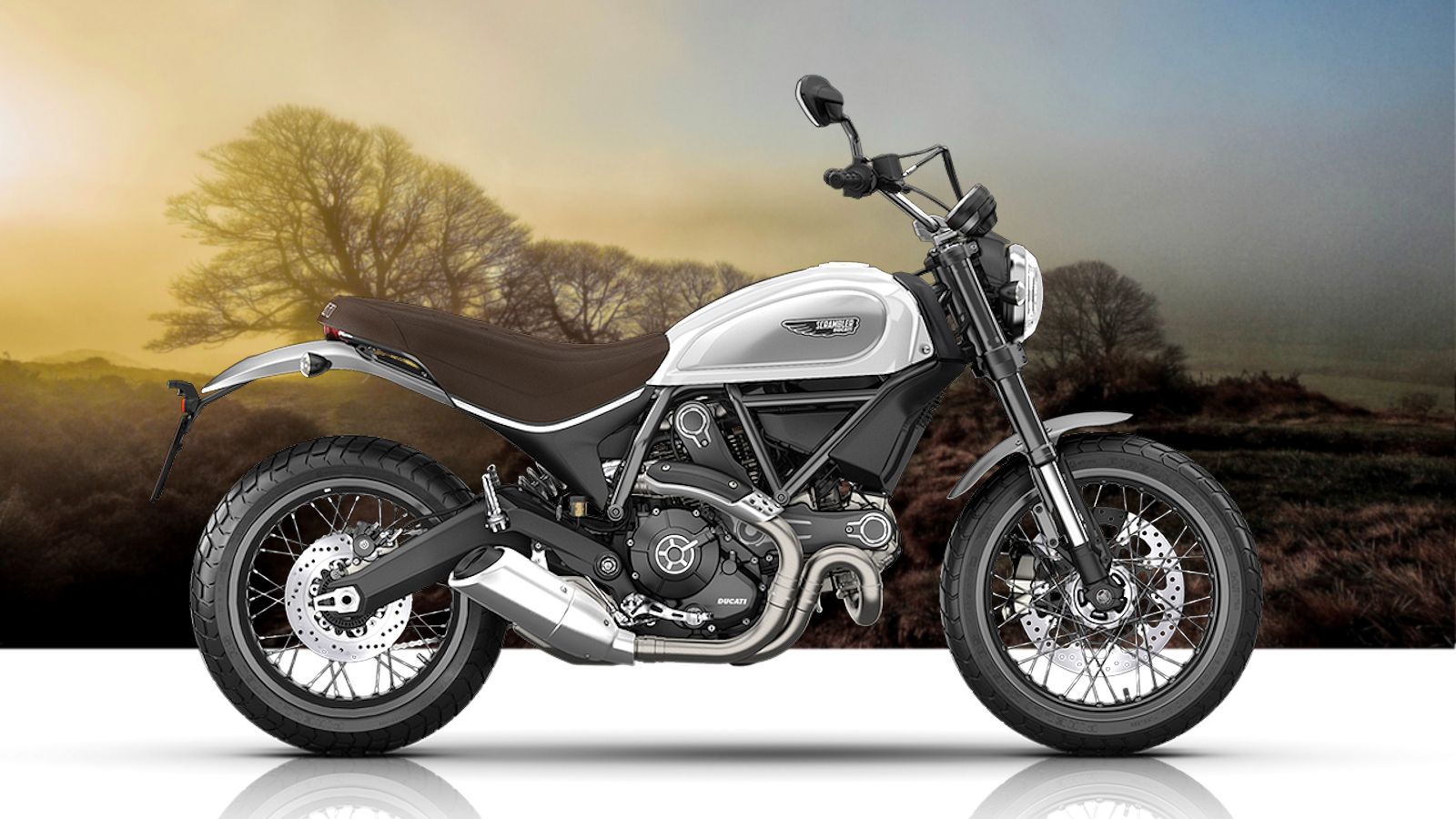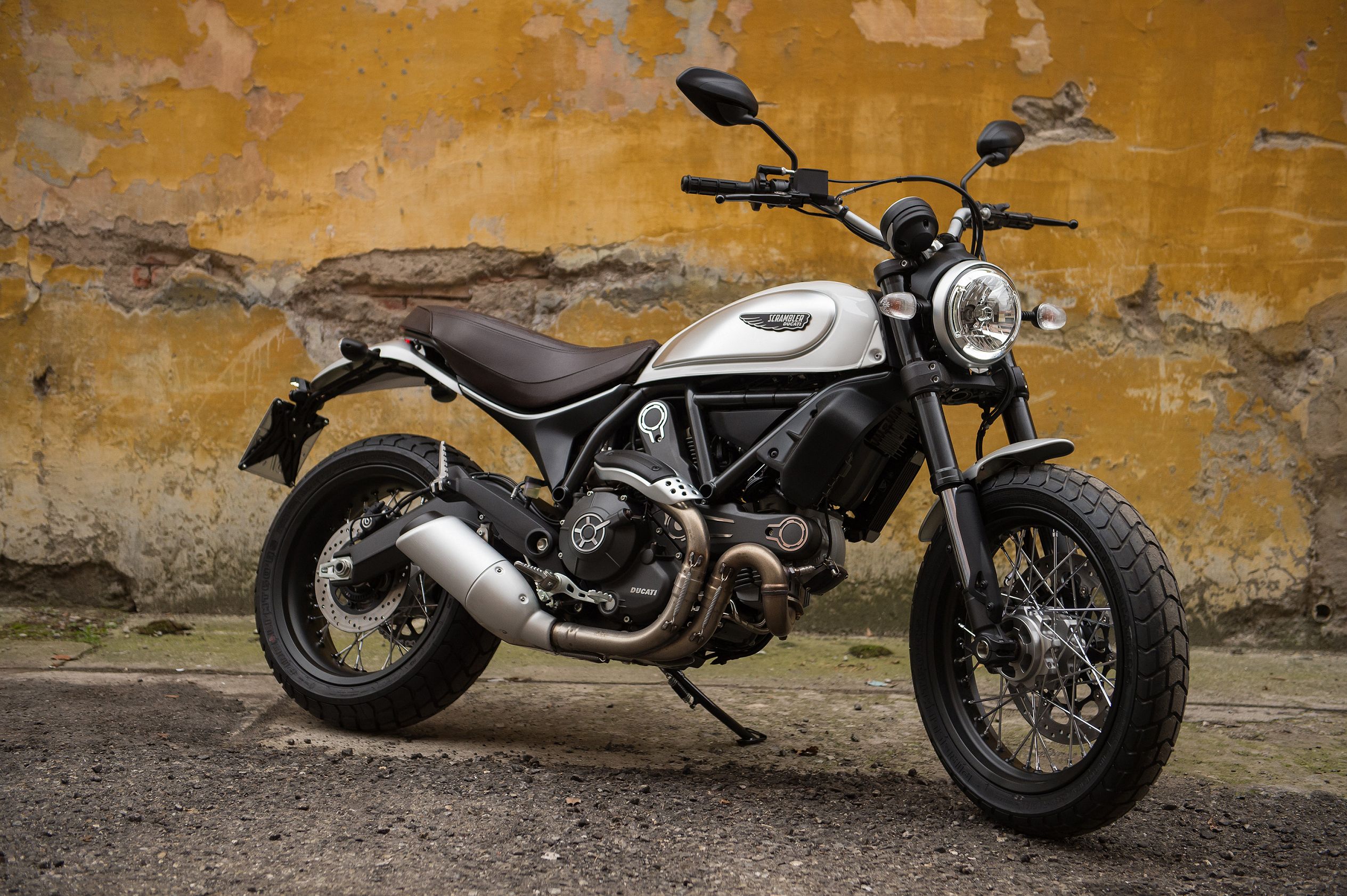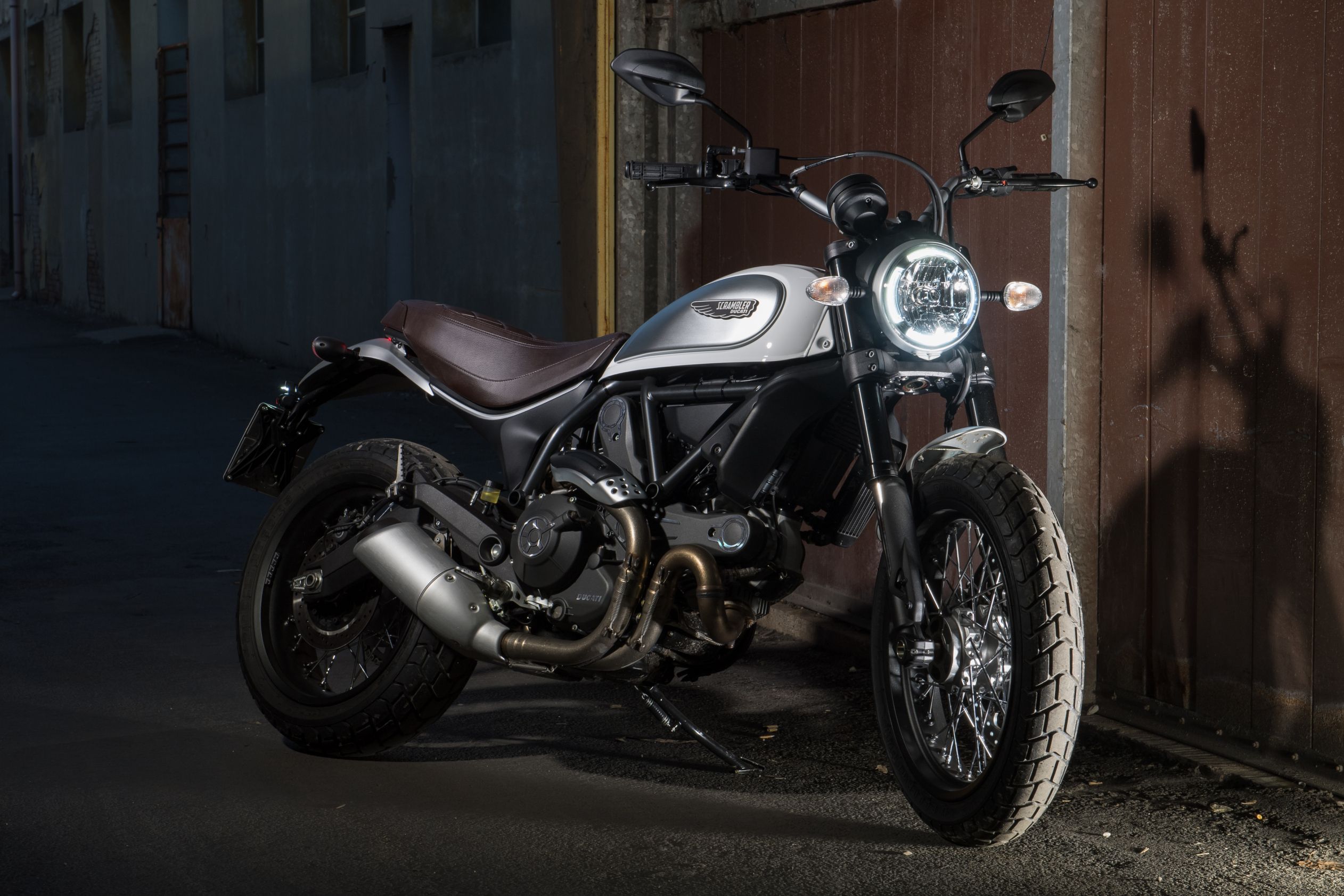Ducati's Scrambler lineup covers a range of looks and styles, but it's the Classic that really ties into the original Scrambler circa the 1970s. It comes with Sugar White as one of the available colors -- just like the original -- and sports a tan finish on the seat for even more dated flavor. Performance is up to modern standards however; with 75 ponies in the paddock and Euro 4 emissions compliance, the Classic delivers contemporary operation to go with its somewhat dated aesthetic influences. The hooliganism and devil-may-care attitude comes as part of the standard equipment package.
Continue reading for my review of the Ducati Scrambler Classis.
2015 - 2018 Ducati Scrambler Classic
- Make: Array
- Model: 2015 - 2018 Ducati Scrambler Classic
- Engine/Motor: L-Twin, Desmodromic distribution, 2 valves per cylinder, air cooled
- [do not use] Vehicle Model: Array
Design
A blend of custom looks and modern performance, the Classic leads off with a front fender that looks as though the better part of it succumbed to the cutting torch and wound up on someone's garage floor. The custom tie-in continues with blackout treatment over the fork struts, tripletree, mirrors and more. In keeping with the target era, the Classic runs a round headlight can and standard bulb, but LED technology brings the turn signals and taillight into the 21st century with eye-piercing performance that is all but impossible to ignore or miss in spite of the small size of the emitter clusters.
Fenders at both ends run the same brushed-aluminum finish as the stock (but interchangeable) fuel-tank covers, but the tank itself bears the actual model color with Sugar White on tap or Orange Sunshine paint for the 3.57-gallon fuel tank. As much as I like how the orange and black work together, the Sugar White is special as it's the same color used by the original Ducati Scrambler; same with the wide black stripe on the dorsal of the teardrop tank.
The rear of the tank tapers both vertically and horizontally to form a narrow waist where it meets the 31.1-inch tall, tan-finish saddle so you have plenty of “thigh room” when you deploy your training wheels. Lozenge-finish (diamond-tuft) stitching gives the bench seat even more '70s charm as it follows the upswept subframe to the slightly elevated pillion pad. That pad, the fold-up aluminum footpegs and the J.C. handles make up the entirety of the passenger's amenities, and I'll let ya know up front that the swingarm-mount footpegs don't necessarily provide the kindest ride; not as smooth as a frame-mount peg system, that's for sure.
A fullish rear fender mounts the rear turn signals and license plate with the LED taillight tucked up under the trailing edge of the seat like the rest of the Scrambler family. Neat, clean and stylish, but not quite as cool looking as a nice blue-dot tombstone taillight. Overall, the Classic bears much the same look as the rest of the family, and the '70s design connections are perhaps too few and too subtle for most observers. Of course, you don't choose your rides based on their opinions, do you...
Chassis
A twin-spar steel Trellis frame serves as the main structure with the engine as a stressed member to complete the assembly and help keep sprung weight low. To keep unpsrung weight down, the factory used aluminum for the gull-wing swingarm and laced wheels, and only used a single, coil-over shock out back to tame the rear wheel. It rides offset to the left side with adjustable rebound damping on top of the obligatory spring-preload adjustment for a little lagniappe beyond the bare minimum.
Up front, a set of 41 mm inverted struts support the front end with the same 5.9 inches of travel as the rear end, but with none of the adjustability. Beefy struts lend the system extra strength with a pair of fork guards that keep the swept area of the inner fork tube clean and free of grit in order to prolong the life of the fork seals.
Pirelli's MT 60 RS hoops line the 18-inch front rim and 17-inch rear. The tread comes cut with street flats for the black, and deep grooves for brown/sand for performance that is in keeping with its scrambler heritage. A 330 mm single front disc and four-piston anchor haul down the front wheel with a 245 mm disc and single-pot caliper out back. The Bosch 9.1 MP ABS protection comes as part of the standard equipment package.
|
Frame: |
Tubular steel Trellis frame |
|
Rake: |
24° |
|
Trail: |
112 mm (4.4 in.) |
|
Front suspension: |
Upside down Kayaba 41 mm fork |
|
Rear suspension: |
Kayaba rear shock, pre-load and rebound adjustable. Aluminum double-sided swingarm |
|
Front wheel/Travel: |
Spoked aluminum wheels, 3,00" x 18"/5.9 inches |
|
Rear wheel/Travel: |
Spoked aluminum wheels, 5,50" x 17"/5.9 inches |
|
Front tire: |
Pirelli MT 60 RS 110/80 R18 |
|
Rear tire: |
Pirelli MT 60 RS 180/55 R17 |
|
Front brake: |
330 mm disc, radial 4-piston caliper with ABS as standard equipment |
|
Rear brake: |
245 mm disc, 1-piston floating caliper with ABS as standard equipment |
Drivetrain
Ducati built an 803 cc Desmodue powerplant for the Scrambler line using tech from its Monster program but with a character all its own for linear, user-friendly power delivery. The oil- and air-cooled engine borrows the Monster's 88 mm barrel and 66 mm stroke with an 11-to-1 compression ratio that will require top-tier pump gas to prevent pinging and dieseling. Ducati's signature Desmodromic valve system times the two-valve heads with a pull-closed cam to close the poppets rather than relying on springs that are subject to harmonic float, weakening rates and breakage. 'Course, the trade off is a higher periodic-maintenance load, but Duc has the service interval up to 7,500 miles nowadays, and that works out nicely with the service intervals on the more mundane systems.
The engine runs with 11 degrees of valve overlap, which is when both the intake and exhaust valves are open to help flush out the waste gasses from the previous charge in order to keep the incoming charge as clean as possible. Problem is; too much overlap can allow too many free hydrocarbons out with the exhaust, so the 11-degree overlap strikes a balance between clean charges and clean exhaust, and that's part of the reason it meets the Euro 4 emission standards.
Induction control falls to the cable-type hand control, 50 mm throttle body and electronic fuel injection. No electronic augmentations here to drive up the price, just raw control and a linear torque delivery that delivers predictable power. Said power clocks in with 75 ponies at 8,250 rpm and 50.2 pound-feet of torque at 5,750 rpm. As an L-twin, it develops its torque lower down than many other engine types, but should be considered a medium-high revving engine with most of the cookies high up in the range. An anti-hopping clutch couples engine power to the six-speed transmission with a tough chain drive to make the final connection to the rear wheel.
|
Engine: |
L-Twin, Desmodromic distribution, 2 valves per cylinder, air cooled |
|
Displacement: |
803 cc |
|
Bore x stroke: |
88 x 66 mm |
|
Compression ratio: |
11:1 |
|
Power: |
73 hp @ 8,250 rpm |
|
Torque: |
49 lb-ft @ 5,750 rpm |
|
Fuel injection: |
Electronic fuel injection, 50 mm throttle body |
|
Exhaust: |
Exhaust system with single stainless steel muffler, aluminum silencer cover, catalytic converter and 2 lambda probes |
|
Gearbox: |
6 speed |
|
Clutch: |
APTC wet multiplate with mechanical control |
Price
Ducati's Scrambler Classic rolls with an MSRP of $10,695 in Sugar White or Orange Sunshine. Ducati covers your new ride with a 24-month unlimited mileage warranty.
|
Standard Equipment: |
Steel tank with interchangeable aluminum side panels, headlight with glass lens, LED light-guide and interchangeable aluminum cover, LED rear light with diffusion-light, LCD instruments with interchangeable aluminum cover, machine-finished aluminum belt covers, under-seat storage compartment with USB socket |
|
Classic Equipment: |
Front and rear aluminum mudguards, vintage design seat, fuel tank with black stripe, high plate support, dedicated logo |
|
Warranty: |
24 months unlimited mileage |
|
Color: |
Orange Sunshine, Sugar White |
|
Price: |
$10,695 |
Competitor
Though the Scrambler Classic can operate off of civilized roads, there's no doubt that it comes with a blacktop bias. With that in mind, I decided to give Harley-Davidson's street-centric Street Rod a look since there's some definite mission overlap between the two. The Street Rod sports some usd front forks to go with the cafe' racer bullet fairing and bobbed fenders with blackout treatment all around. While it's true that a scrambler is not the same as a cafe', I would argue that, historically, both design types are borne of the same era and both were originally built on standard/UJM platforms, so they share a common trunk on the family tree even if they've branched off in slightly different directions. One thing is certain; they both exude a sporty vibe that almost seems to invite shenaniganery.
Harley runs without any sort of adjustability in the front suspension, much like Ducati, but the piggyback shocks at the rear end is limited to a variable spring preload feature as the only ride-quality tweak. Harley gets a little more serious about the brakes with dual front discs both a single on the Scrambler, but ABS is a $750 option where Duc bundles it on with the rest of the stock equipment.
The Street Rod's, water-cooled, 749 cc Revolution-X V-Twin powerplant churns out 47.9 pound-feet of torque at a slightly lower 4,000 rpm, which is a few pounds shy of the Duc's L-Twin and its 50.2 pounds o' grunt. Since neither run with much in the way of fancy engine-control gadgetry, it comes down to the raw power, and although H-D falls a tad short, it also produces max grunt at a lower rpm, so it's ultimately a trade off.
Harley picks up a rare win at the checkout with an $8,994 price tag to go with the roughly equal performance and technology we see in the Ducati Scrambler and its $10,695 sticker.
versus0}
“Fun and classy, the Classic puts a nice spin on the now-familiar Scrambler looks. Love the laced wheels and tan seat, and of course, the Sugar White paint and black stripe are a nice historical touch. Good as an entry-level ride or a commuter, the Classic should retain its value for resale when you get ready to upgrade.”
He Said
My wife and fellow motorcycle writer, Allyn Hinton, says, “A true blast from the past, this Scrambler Classic is as close to a reinterpretation of the original scramblers as I've ever seen. Sure the originals were thumpers, but the looks are authentic even if there are electronics hidden away to make this a modern version. The original Ducati Scrambler from the early 70s was all about fun and a budget price, and while our new Scrambler is climbing the price ladder a bit, it's still all about fun. For me, the size is good, but someone even just on the taller side of average it might be a little cramped, especially if your height is mostly in the legs. As an urban commuter, it's small enough to filter through traffic with confidence. Instrumentation is fairly basic, but it's a fairly basic ride. If you're looking for rider modes and such as that, the Scrambler probably isn't the right bike for you.”
She Said
|
Engine & Drivetrain: |
|
|
Engine: |
L-Twin, Desmodromic distribution, 2 valves per cylinder, air cooled |
|
Displacement: |
803 cc |
|
Bore x stroke: |
88 x 66 mm |
|
Compression ratio: |
11:1 |
|
Power: |
73 hp @ 8,250 rpm |
|
Torque: |
49 lb-ft @ 5,750 rpm |
|
Fuel injection: |
Electronic fuel injection, 50 mm throttle body |
|
Exhaust: |
Exhaust system with single stainless steel muffler, aluminum silencer cover, catalytic converter and 2 lambda probes |
|
Gearbox: |
6 speed |
|
Ratio: |
1=32/13 2=30/18 3=28/21 4=26/23 5=22/22 6=24/26 |
|
Primary drive: |
Straight cut gears; Ratio 1.85:1 |
|
Final drive: |
Chain; Front sprocket 15; Rear sprocket 46 |
|
Clutch: |
APTC wet multiplate with mechanical control |
|
Chassis: |
|
|
Frame: |
Tubular steel Trellis frame |
|
Rake: |
24° |
|
Trail: |
112 mm (4.4 in.) |
|
Front suspension: |
Upside down Kayaba 41 mm fork |
|
Rear suspension: |
Kayaba rear shock, pre-load and rebound adjustable. Aluminum double-sided swingarm |
|
Front wheel/Travel: |
Spoked aluminum wheels, 3,00" x 18"/5.9 inches |
|
Rear wheel/Travel: |
Spoked aluminum wheels, 5,50" x 17"/5.9 inches |
|
Front tire: |
Pirelli MT 60 RS 110/80 R18 |
|
Rear tire: |
Pirelli MT 60 RS 180/55 R17 |
|
Front brake: |
330 mm disc, radial 4-piston caliper with ABS as standard equipment |
|
Rear brake: |
245 mm disc, 1-piston floating caliper with ABS as standard equipment |
|
Dimensions & Capacities: |
|
|
Seat height: |
31.1 inches |
|
Max height: |
45.3 inches / brake reservoir |
|
Max width: |
33.3 inches / mirrors |
|
Max length: |
82.7 - 85.2 inches |
|
Wheelbase: |
56.9 inches |
|
Total steering lock: |
35° |
|
Fuel tank capacity: |
3.57 gallons (US) |
|
Dry weight: |
389 lbs |
|
Wet weight: |
424 lbs |
|
Number of seats: |
Dual seat |
|
Details: |
|
|
Standard Equipment: |
Steel tank with interchangeable aluminum side panels, headlight with glass lens, LED light-guide and interchangeable aluminum cover, LED rear light with diffusion-light, LCD instruments with interchangeable aluminum cover, machine-finished aluminum belt covers, under-seat storage compartment with USB socket |
|
Classic Equipment: |
Front and rear aluminum mudguards, vintage design seat, fuel tank with black stripe, high plate support, dedicated logo |
|
Warranty: |
24 months unlimited mileage |
|
Color: |
Orange Sunshine, Sugar White |
|
Price: |
$10,695 |
References
Harley-Davidson Street Rod
See our review of the Harley-Davidson Street Rod.


